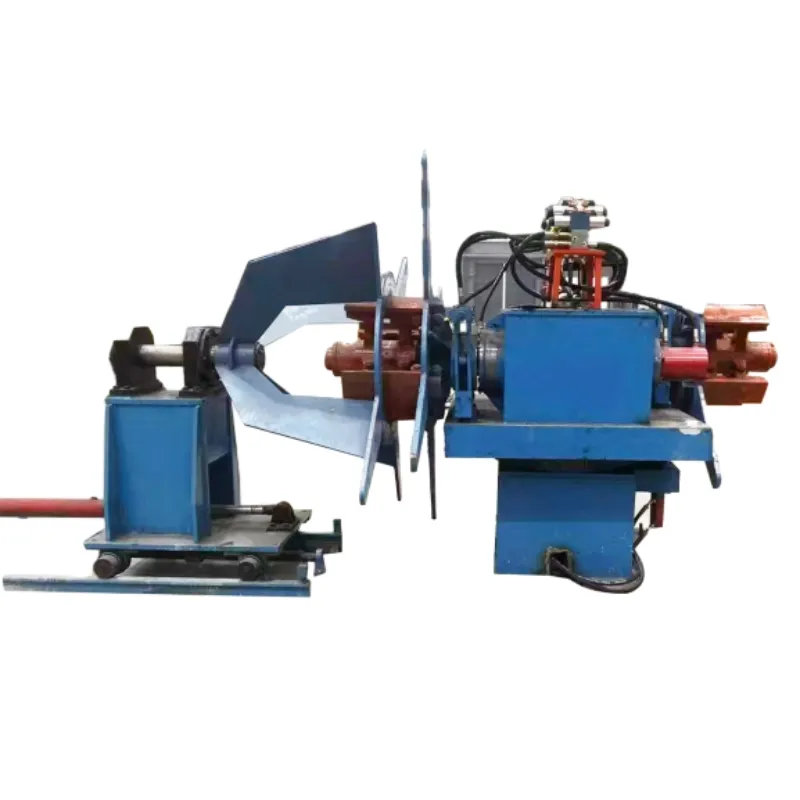Portable Roll Former for Efficient On-Site Metal Construction Solutions and Operations
The Versatility and Innovation of Portable Roll Formers
In the ever-evolving landscape of construction and manufacturing, innovation plays a pivotal role in enhancing efficiency and productivity. Among the numerous tools that have dramatically transformed these sectors, portable roll formers stand out as a particularly versatile and valuable asset. These machines revolutionize the way metal components are shaped, offering unparalleled convenience and flexibility to users in various industries.
What is a Portable Roll Former?
A portable roll former is a specialized machine designed to convert flat sheet metal into various shapes and profiles through a continuous process of rolling and forming. Unlike traditional roll formers, which are fixed installations requiring substantial floor space, portable roll formers can be easily transported to different job sites. This mobility opens up a realm of possibilities for construction teams, metal fabricators, and contractors who need to produce custom metal components on-site.
Advantages of Portable Roll Formers
1. Mobility One of the most significant advantages of portable roll formers is their mobility. These machines are often lightweight and compact, allowing them to be transported in standard vehicles. This makes it easy to set up and operate at remote job sites, eliminating the need for transporting materials to a central location for processing.
2. On-site Production With portable roll formers, businesses can create metal profiles exactly where they are needed. This not only speeds up the construction process but also reduces material waste. Contractors can produce components such as metal roofing panels, gutters, and custom brackets precisely to specification, which is particularly useful for specialized projects.
portable roll former

3. Customization Each construction project comes with its unique requirements. Portable roll formers can be adjusted to produce a wide variety of shapes and sizes, allowing for high levels of customization. This flexibility is invaluable in today’s construction landscape, where tailored solutions are often necessary to meet specific design and structural needs.
4. Cost-Effectiveness By using a portable roll former, businesses can save on labor costs, transportation expenses, and material waste. Producing metal components on-site reduces the time and resources spent on logistics and ensures a seamless workflow, thereby enhancing overall profitability.
Applications Across Industries
Portable roll formers find applications in various industries, including commercial construction, residential building, and even agricultural settings. They are commonly used to create roofing materials, siding, and metal framing. In the agricultural sector, roll formers are employed to manufacture components for barns, storage facilities, and silos, showcasing the machine's adaptability.
Moreover, portable roll formers are increasingly being integrated with advanced technologies such as CNC controls and automated systems. This integration allows for more precise manufacturing and opens up opportunities for manufacturers to expand their product offerings by creating complex designs that were previously challenging to achieve.
Conclusion
The advent of portable roll formers has marked a significant leap forward in the way metal components are manufactured and utilized in construction and fabrication. Their combination of mobility, customization, and cost-efficiency makes them an indispensable tool for modern contractors and manufacturers. As industries continue to evolve, embracing innovation and efficiency, portable roll formers will undoubtedly play a crucial role in shaping the future of metal fabrication. The ability to produce high-quality, custom metal components on-site is not just a convenience; it's a transformative advantage that aligns with the demands of contemporary construction projects.
-
High Frequency Straight Seam Welded Pipe Production Line-BzZhou Xinghua Machinery Equipment Manufacturing Co., LTD.|Precision Welding, High EfficiencyNewsJul.30,2025
-
High Frequency Straight Seam Welded Pipe Production Line|BzZhou Xinghua|Precision Welding&EfficiencyNewsJul.30,2025
-
High Frequency Straight Seam Welded Pipe Production Line - BzZhou Xinghua|Precision Engineering&EfficiencyNewsJul.30,2025
-
High-Frequency Straight Seam Welded Pipe Production Line-BzZhou Xinghua Machinery Equipment Manufacturing Co., LTD.NewsJul.30,2025
-
High-Frequency Straight Seam Welded Pipe Production Line-BzZhou Xinghua Machinery Equipment Manufacturing Co., LTD.|Precision Manufacturing, High EfficiencyNewsJul.30,2025
-
High Frequency Straight Seam Welded Pipe Production Line-BzZhou Xinghua Machinery Equipment Manufacturing Co., LTD.|Precision Steel Pipe Manufacturing&Industrial EfficiencyNewsJul.29,2025


